Whew! Another long stretch sans update. I hope springtime is blooming around you all in lovely ways.
The last time I posted, I was about to set off on a 5 day solo bikepacking trip, and since then I’ve completed said bike trip, said goodbye to Argentina and Chile and arrived in Colombia, where I spent the last month. Now, I’m writing from a migrant shelter in southern Mexico, where I am after a last minute change of plans and will be for the next month.
First things first! The bikepacking now feels distant, but looking back, I mostly remember long mornings on my bike, creaking along up hills and bumping over potholes (lost an empanada from my back rack to one especially vicious one, #rip), and rolling into picturesque campsites or hostel yards where I would pitch my tent, make some objectively bad food, and crawl into my sleeping bag. I had some silly misadventures with cash and food supplies: didn’t bring enough of either and after a long afternoon troubleshooting mid-trip I was able to exchange a US $20 bill in a pharmacy so I could rent a tent site and buy some noodles. All things considered though, I feel proud of myself for doing something I’ve never done, doing it alone, and enjoying it! As I sit here now in the state of Tabasco’s 100º+ weather, I especially miss the cold misty mornings spent pedaling up steep dirt roads– past glowing green pastures of gauchos tracking their cattle on horseback. I met very kind and generous people who helped me out, cheered me on, and gave me contacts to reach out to if needed. Below are photos from the entrance to Los Alerces National Park, scenes from the road, one of my daily (blurry) self timer photos, yummy fuel, and anti-mining graffiti in the town of Cholila. The Chubut Province in Argentina is the last in the country without mega-mining polluting the lands and waters, and the Indigenous Mapuche people and many locals intend to keep it that way.
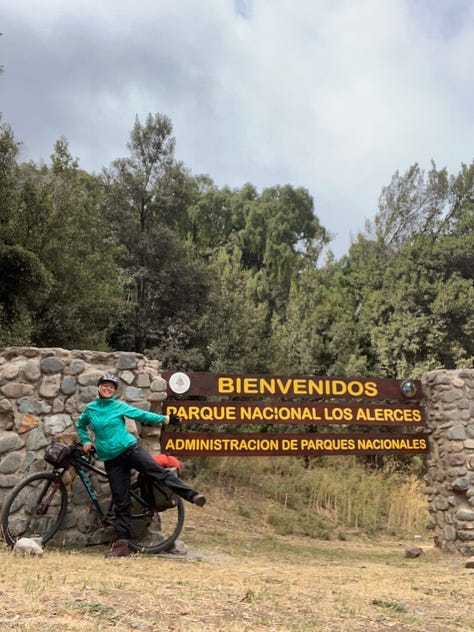
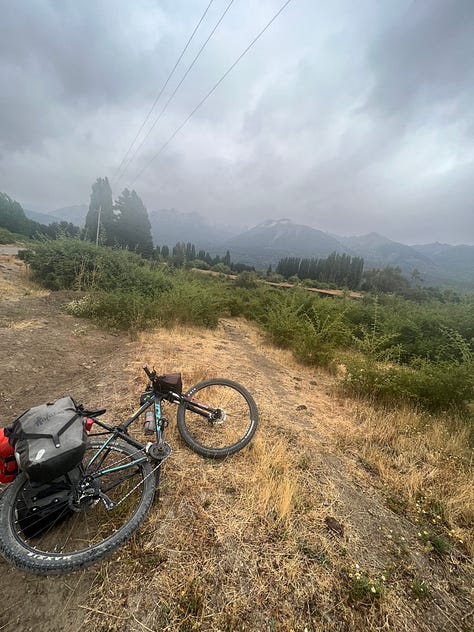
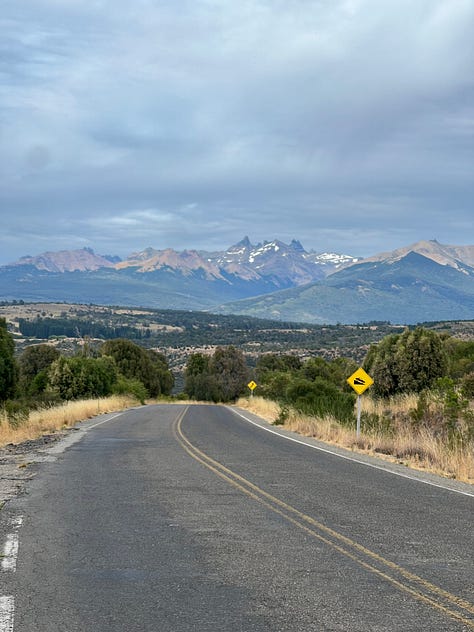
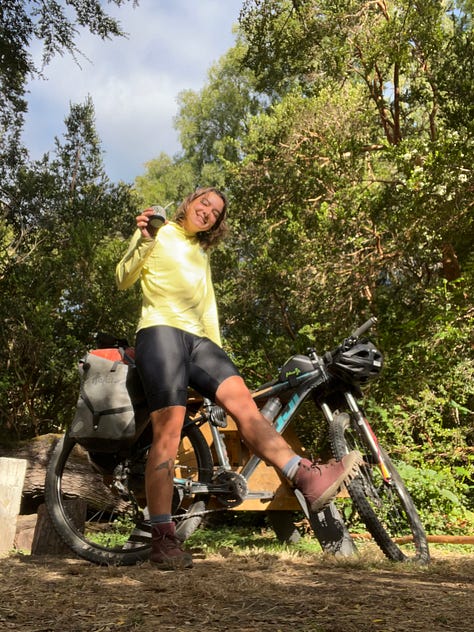

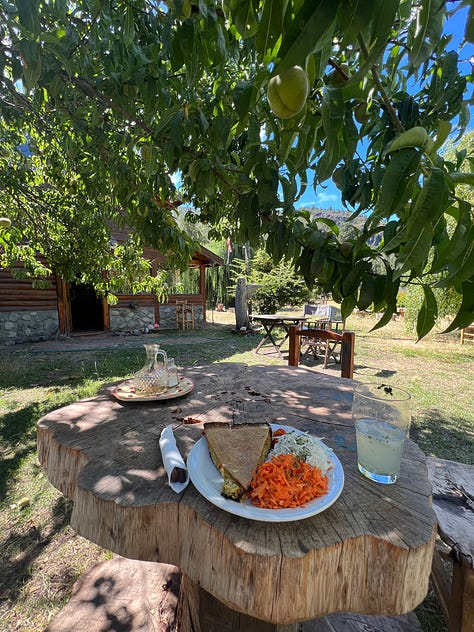
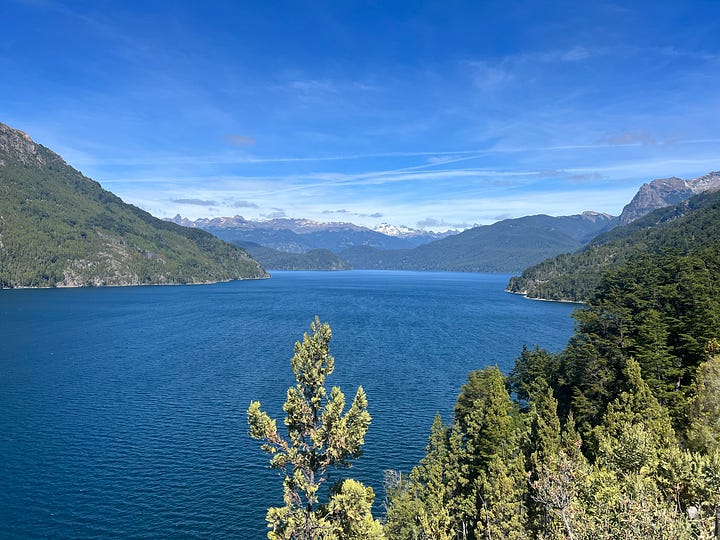
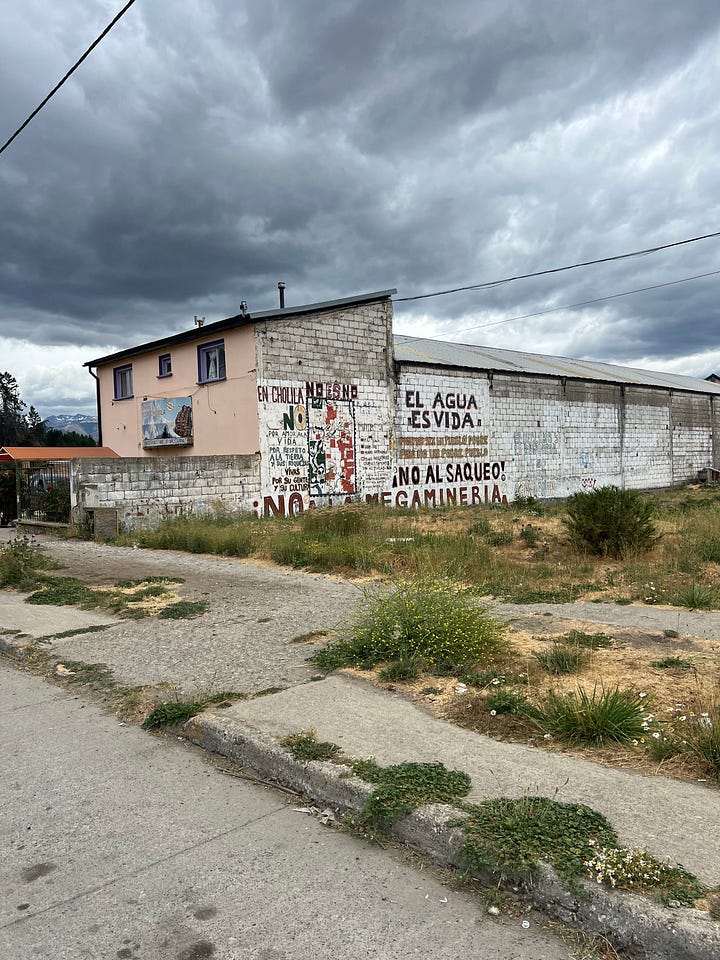
I biked the home stretch into the little town of Esquel, did a huge load of laundry in the hostel, and caught a bus through the Andes to the border of Chile, where I walked across and then caught another bus into the town of Futaleufú, a mecca for whitewater kayakers across the world. One more bus and I showed up at a campsite where I found a friend of my brother’s– we had realized we both were in Chile about a month before making it work to meet up in Futa for a few days. I didn’t get to paddle but spent the days running shuttles for the folks we were camping with and sipping coffees to stay out of the near constant drizzle. After just a few days, we moved to Puerto Montt, which involved a few hours in a car and then 8 hours on a ferry. While long, it was sweetly reminiscent of Washington and time spent chugging across the Salish Sea in ferries. After saying goodbye to my friends, I spent a few days drying out gear and sleeping before heading back north to Santiago, and then even farther north to Bogotá, Colombia. I passed my half-way point of my trip in Puerto Montt!
Leaving Chile felt like the ending of a really good book, one that you might have intentionally read slowly to savor it a little longer. A lot of the goals and visions I had for this year came to fruition during my time in Chile: making strong connections with activists and kayakers, pushing myself out of my comfort zones, and being able to contribute in a strong way to projects I really care about. I went to Colombia to continue pursuing those goals while attending and volunteer at the Samaná Festival, a week-long kayaking and river advocacy festival. The Samaná River is the last free-flowing and unpolluted river in Antioquia, the state which Medellín– the second largest city in Colombia– is in. It was a busy, hot, and fun week full of long chiva rides (pictured below), setting up a slalom race course on the Calderas river, one of the main tributaries to the Samaná, and meeting kayakers from as far as France and as close as the next town over. This event was the first of its kind in that it included the first competitive kayaking marathon, which took place through the Samaná canyon, a spectacular stretch of river I got to raft on the first day of the festival. The marathon ended in the tiny town of Puerto Garzas, where there was a parade and a night of music celebrating the race and this special river.
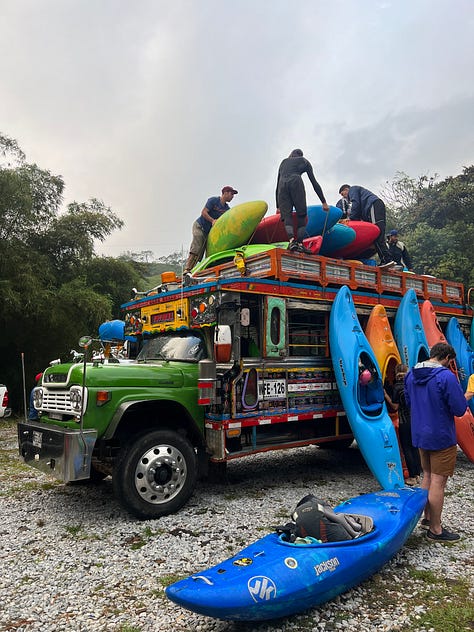

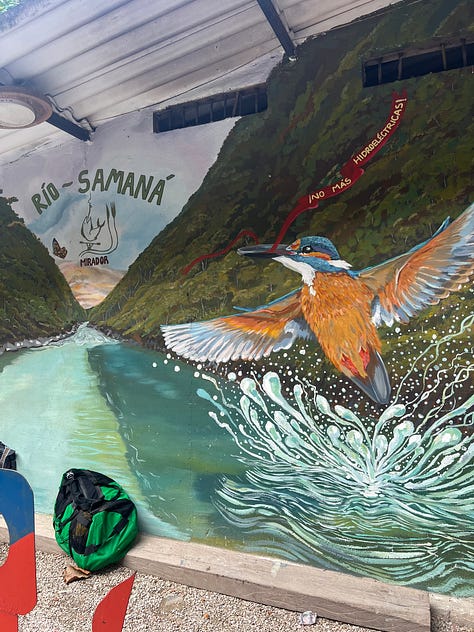
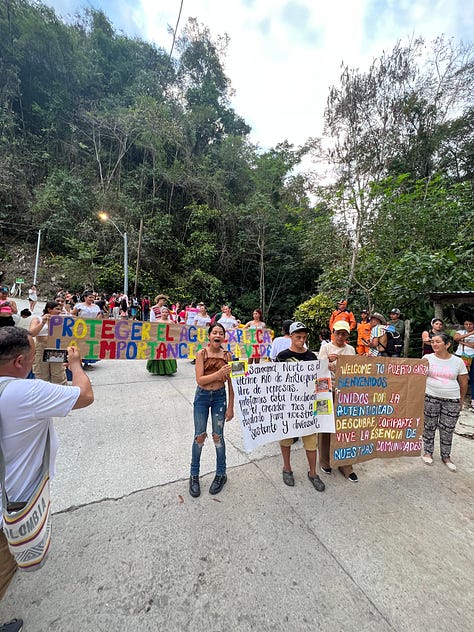
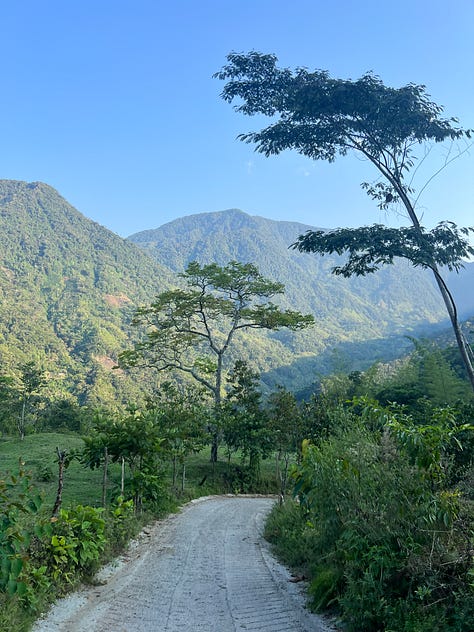
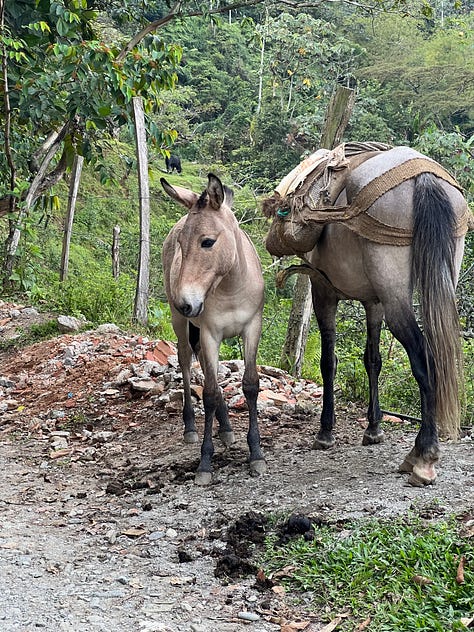
The video above is of world-class kayaker Nouria Newman making a burly class 5 rapid look easy. After the event wrapped up, I headed back to Medellín, where I met up with one of my best friends from home who has been traveling on this same grant in Guatemala and Mexico. It has been such a joy to be with them again! They have brought a sense of the familiar to the unfamiliar, which is a surreal and special feeling. We spent a few days in the city learning about the history of the armed conflict in museums and street tours, and then went to the rural town of Jardín, stayed at a sweet hostel out of town, went on long hikes, and paraglided (!!). In the next town we met up with their friend from a language school in Guatemala and together we went on long hikes and played the famous Colombian bar game tejo, which involves gunpowder (and beer of course). We ended our time in Colombia with some days in Cali, the salsa capital of the world, where we meandered book stores, joined another street tour, and (you guessed it) took salsa lessons at one of the hotspots in the city. I was planning on spending another 2-4 weeks in Colombia and changed those plans to join my friend here in Tabasco, Mexico, where we’ll be volunteering at a migrant shelter for the next month.
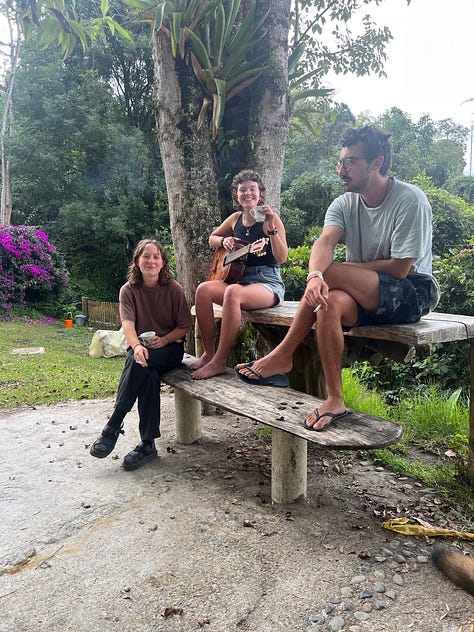

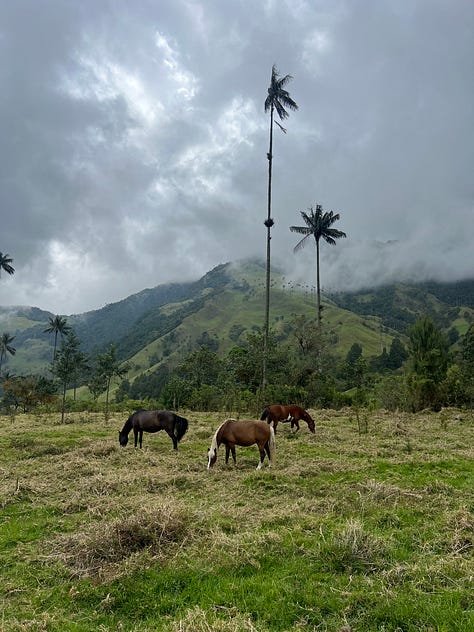
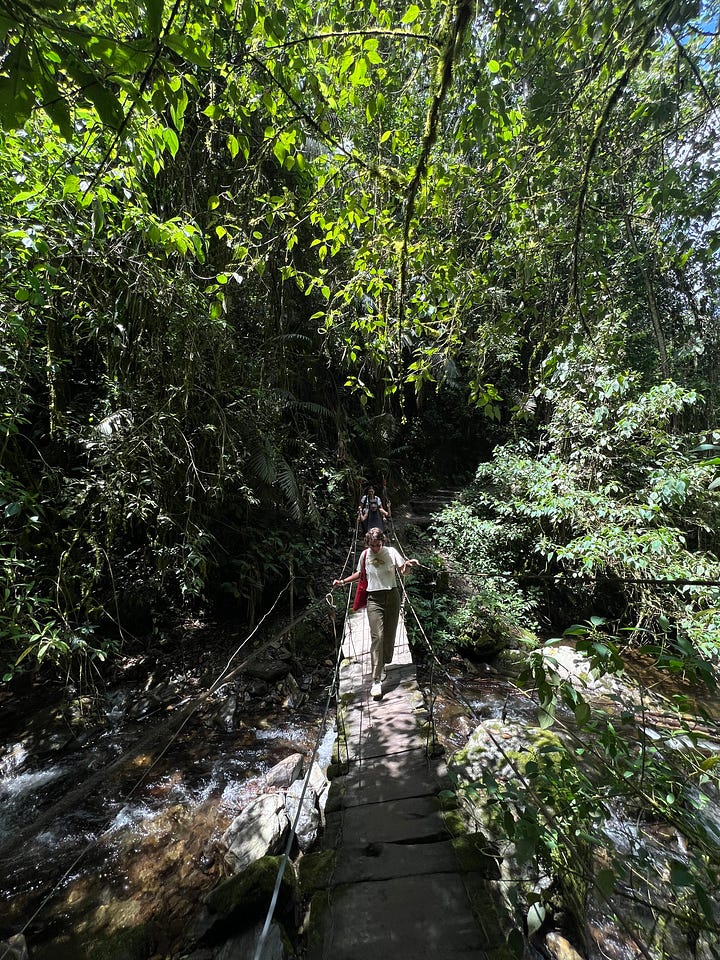
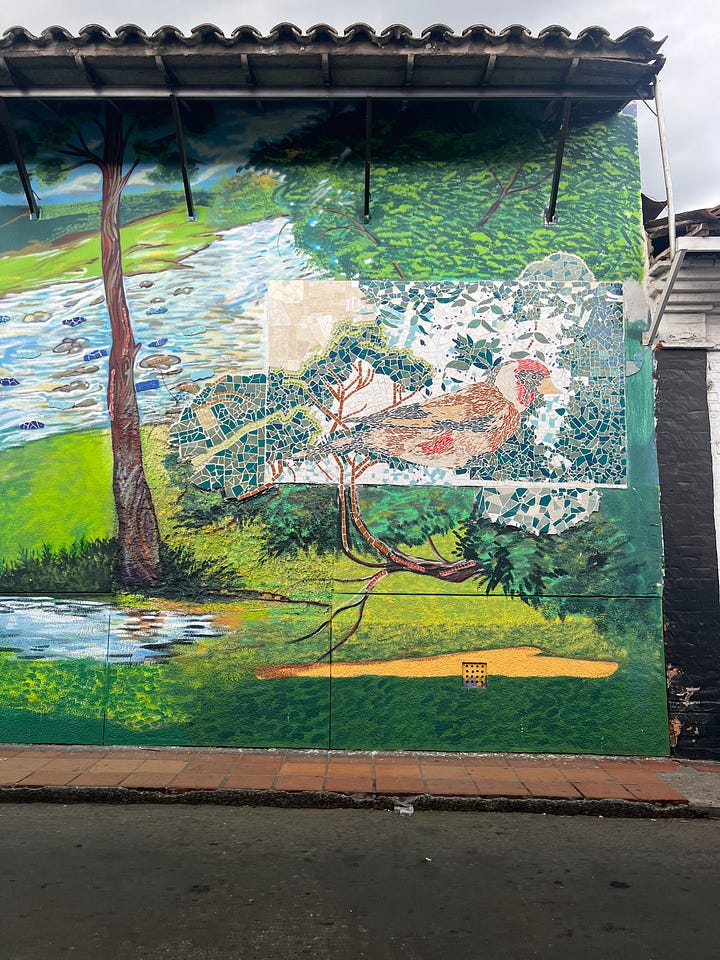
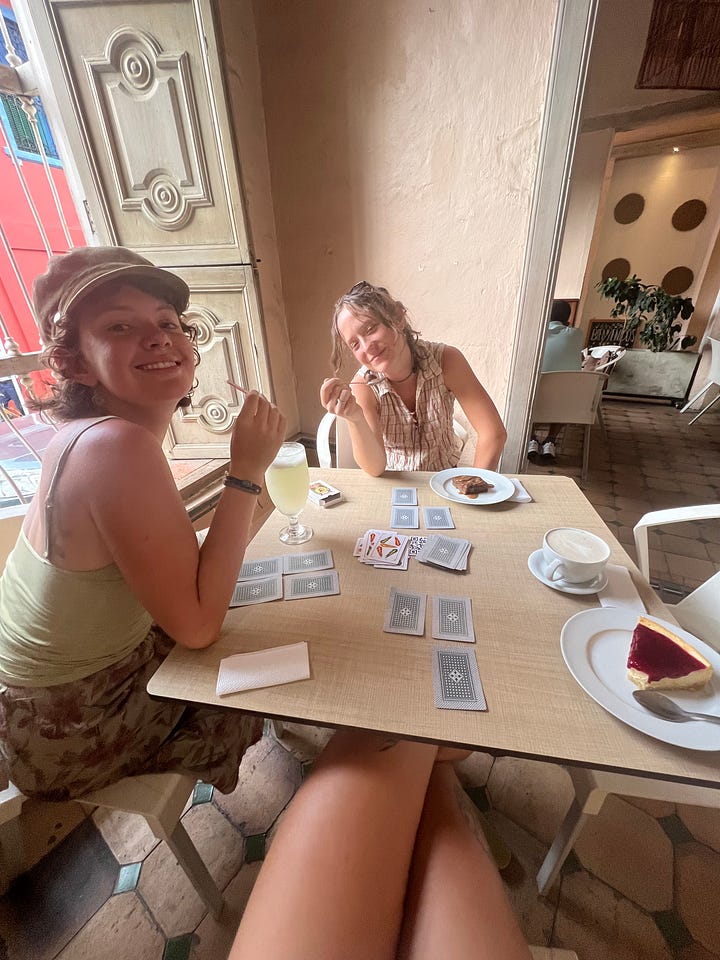
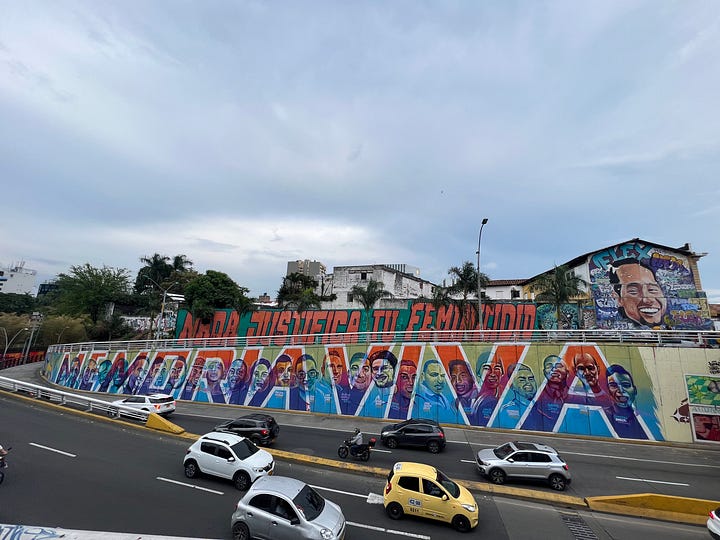
Similarly to leaving Chile, leaving Colombia was bittersweet. With the combination of what I learned at the festival and what I learned about the country’s history in the cities, I have been thinking a lot about the intersection between ecological justice and human rights. In Colombia, many rural agricultural based communities were displaced from their land by FARC’s (Revolutionary Armed Forces of Colombia) conflict with the Colombian military. To this day, people are still fighting for justice for the victims of the longest armed conflict in Latin America, which killed at least 260,000 people. Here’s a basic timeline of the conflict if you’re interested in learning more. As I start work at this migrant shelter in southern Mexico I’m continuing to consider these impacts violence has to life of all kinds. It is crucial, of course, to recognize that the United States military and politics has driven or influenced nearly every armed conflict in Latin America and many other parts of the world. I am already struck by the discomfort I feel as someone from the United States working in a migrant shelter, where many of the people moving through are hoping to get to the same place I call home. I can simply book a flight back to without considering all it takes for so many others to arrive to the same destination.
On that note, tell your friends you love them and find a way to spread some kindness around your communities. Thanks again for checking in with my updates :) <3




I love you! Thanks for sharing these updates
So fun to imagine you on this adventure, learning and experiencing so much.
This had me reminiscing on my own times in west Africa, Russia, France, Turkey. Thank you for writing it.
Excited to catch up with you about this the next time I see you IRL!